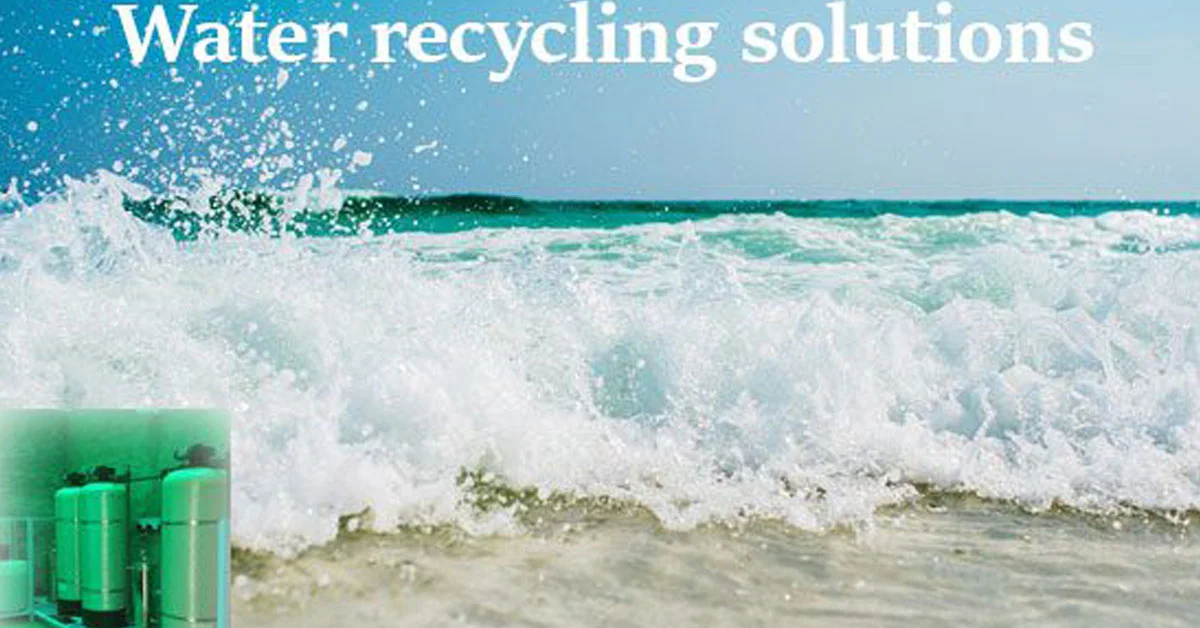Water Recycling Solutions: An Introduction
Water recycling solutions represent a sustainable approach to addressing the world’s growing water scarcity challenges. These innovative methods allow us to repurpose wastewater for various beneficial purposes. In this comprehensive guide, we will explore the water recycling process, its stages, and the remarkable impact it has on the environment and our communities.
Exploring the Water Recycling Process
The water recycling process involves a series of crucial steps to transform wastewater into a valuable resource. From the initial collection of wastewater to its eventual return to a safe and clean state, we will dive into the intricacies of how water recycling solutions work.
Primary Treatment in Water Recycling: Debris Removal
The first step in water recycling is primary treatment, which focuses on removing large debris and solids from wastewater. This process sets the stage for further treatment and ensures that the water is free from visible impurities.
Secondary Treatment: Biological Processes for Water Recycling
Secondary treatment is where the real magic happens. Microorganisms are harnessed to break down organic matter, effectively cleansing the water and preparing it for advanced stages of treatment.
Tertiary Treatment: Advanced Filtration in Water Recycling
Tertiary treatment employs cutting-edge filtration methods to remove remaining impurities and contaminants. This stage is essential for producing water of high quality suitable for various purposes.
Disinfection and Maintaining Water Quality in the Solution
Ensuring the water’s safety and purity is a top priority. Disinfection processes, such as chlorination or ultraviolet (UV) treatment, play a critical role in eliminating harmful microorganisms and maintaining water quality.
Identifying Wastewater Sources for Effective Water Recycling
To implement effective water recycling solutions, it’s crucial to identify and collect wastewater from various sources, including industrial processes, municipal systems, and even our own homes.
At Home Water Recycling: The Role of Greywater
Greywater recycling offers an eco-friendly solution for homes. It involves reusing wastewater from sinks, showers, and laundry for purposes like landscape irrigation, reducing water waste and utility costs.
Industrial Water Recycling Methods as a Sustainable Solution
Industries play a significant role in water consumption. Discover how industrial water recycling methods are making manufacturing processes more sustainable, reducing environmental impact.
Municipal Water Recycling Systems: A Community Approach
Municipal water recycling systems provide entire communities with clean, recycled water. These systems contribute to water conservation, reducing the burden on freshwater sources.
Innovative Technologies Transforming Water Recycling Solutions
Technological advancements are revolutionizing water recycling. From advanced sensors to smart automation, explore the innovations shaping the future of water recycling.
Overcoming Challenges in Water Recycling
Implementing water recycling solutions isn’t without its challenges. We’ll discuss regulatory hurdles, public perception, and strategies to overcome these obstacles.
Unlocking the Benefits of Implementing Water Recycling Solutions
The benefits of water recycling extend to water conservation, cost savings, and environmental protection. Discover how adopting these solutions can positively impact your organization or community.

Water Recycling in Action: Real-Life Success Stories
Real-world examples demonstrate the effectiveness of water recycling solutions. We’ll showcase success stories from different sectors, highlighting the practical applications and benefits.
Shaping the Future of Water Recycling Solutions
The future of water recycling holds promise for addressing global water challenges. We’ll explore emerging trends, innovations, and the pivotal role of water recycling in a sustainable future.
Water Filtration Plants : The Cornerstone of Sustainable Water Recycling
Water Filtration Plants serve as the backbone of sustainable water recycling, purifying wastewater to meet stringent quality standards. These facilities employ advanced filtration techniques to remove impurities and contaminants, ensuring the safety of recycled water. In the realm of water recycling solutions, these plants play a pivotal role in securing clean and reliable water sources.
Cooling Tower Water Treatment
A cooling tower is a specific exchanger of energy/heat and reduces the temperature of circulating water by direct contact of water with air. All systems run on the principle of reducing temperature by little evaporation process which causes the cooling effect of water. Cooling towers systems provide evaporative cooling for various types of industrial process/systems.

Carbon Capture and Storage and Water Recycling Solutions synergistically address environmental challenges, offering a dual advantage of curbing greenhouse gas emissions and optimizing water resources, fostering sustainable practices for a greener future.
You can Follow us on Facebook , Twitter , Linked in , you tube , and instagram .
FAQs
Q1: What are Water Recycling Solutions, and how do they work?
- Water Recycling Solutions refer to methods and technologies used to treat and reuse wastewater. These systems work by collecting, treating, and purifying wastewater to make it safe for various purposes, such as irrigation or industrial processes.
Q2: Why are Water Recycling Solutions important?
- Water Recycling Solutions are vital for conserving water resources, reducing environmental impact, and addressing water scarcity. They offer a sustainable way to make the most of our limited freshwater supply.
Q3: Are there different types of Water Recycling Solutions?
- Yes, there are various types, including greywater recycling for homes, industrial water recycling, and municipal water recycling systems that cater to different needs and scales.
Q4: Can Water Recycling Solutions be implemented at home?
- Absolutely! Homeowners can install greywater recycling systems to reuse water from sinks, showers, and laundry for landscape irrigation, reducing water wastage.
Q5: What is the difference between primary, secondary, and tertiary treatment in Water Recycling?
- Primary treatment removes large debris and solids, while secondary treatment uses biological processes to break down organic matter. Tertiary treatment involves advanced filtration to produce high-quality, reusable water.
Q6: What are the benefits of implementing Water Recycling Solutions?
- Implementing Water Recycling Solutions can lead to reduced water bills, decreased strain on freshwater sources, and a smaller environmental footprint. It’s a sustainable, cost-effective choice.
Q7: What challenges might organizations face when adopting Water Recycling Solutions?
- Challenges include regulatory hurdles, public perception, and the initial investment in infrastructure. However, these can be overcome with the right strategies and support.
Q8: Are there any success stories or case studies demonstrating the effectiveness of Water Recycling Solutions?
- Yes, many businesses, municipalities, and communities have successfully implemented these solutions, showcasing their effectiveness in conserving water, reducing costs, and promoting sustainability.
Q9: How are innovative technologies shaping the future of Water Recycling Solutions?
- Innovative technologies, such as advanced sensors and automation, are making Water Recycling Solutions more efficient and sustainable, ensuring a brighter future for water management.
Q10: What role does public perception play in the adoption of Water Recycling Solutions?
- Public perception can influence the acceptance and success of water recycling projects. Educating the public about the safety and benefits of these solutions is crucial for their widespread adoption.

